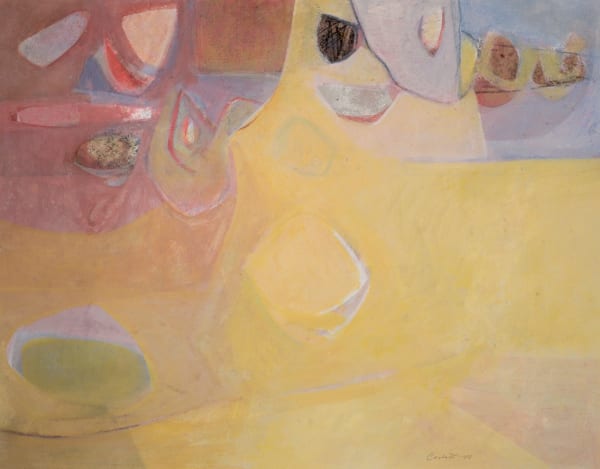Edward Corbett US, 1919-1971
"I intend my work as poetry."
- Edward Corbett
Born in Chicago, Illinois, Edward Corbett was a painter in an abstract expressionist style inspired by the various locations where he lived and traveled. He often titled his paintings for the location that inspired them, but he did not do literal depictions. He was especially noted for subtle changes of effect in colors and surfaces. His works can be seen as poetic landscapes.
Edward Corbett was the son of an army officer and spent his youth in the southwestern United States as well as in the Philippines and Ohio, and in 1937, began art studies at the California School of Fine Arts (CSFA) in San Francisco.
Corbett returned to San Francisco and Douglas MacAgy invited him to teach at CSFA, where he worked alongside Elmer Bischoff, Hassel Smith, David Park, Clay Spohn, Richard Diebenkorn, Mark Rothko and Clyfford Still. During part of his teaching career at CSFA, Corbett lived in Point Richmond in a house with Robert & Mary Fuller McChesney and Hassel & June Smith. He began to paint his famous black paintings. He also taught an advanced drawing and painting course at U.C. Berkeley where Sam Francis was among his students. In 1951, he moved to Taos to teach art and two years later took a job at Mount Holyoke College for nine years. During this time, he spent his summers between Taos, New Mexico and Provincetown, Massachusetts, and later had a home in Washington D.C.
Corbett got his big break when Dorothy Miller chose to exhibit his work in the 15 Americans exhibition at the Museum of Modern Art in 1952. It remains one of the seminal exhibitions of the 20th Century, introducing many to the work of Jackson Pollock, Mark Rothko, Clyfford Still and many of the other Abstract Expressionists. It was for this catalog that he wrote his now infamous phrase, “I intend my work as poetry.”
His artwork can be found in many private and public collections. During his tenure U.S. President Barack Obama borrowed Washington, D.C. November 1963 III from the National Gallery of Art to hang in the White House residence.






